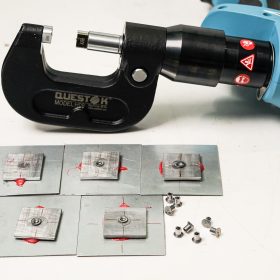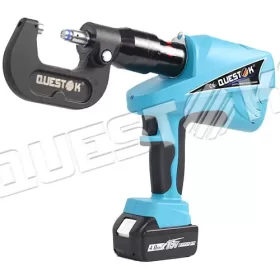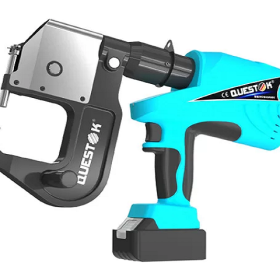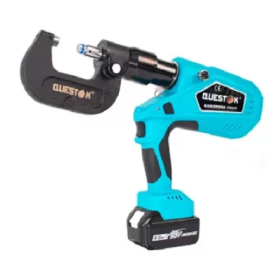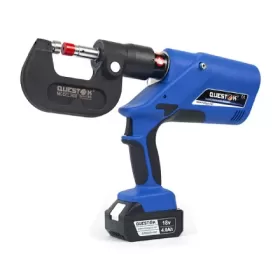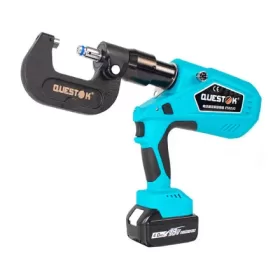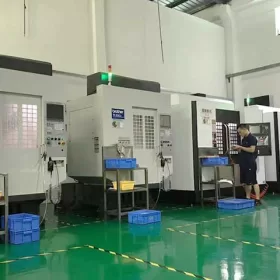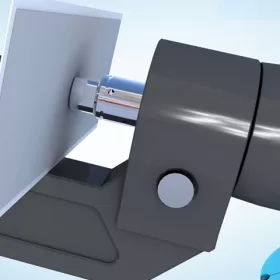Pneumatic Rivet Gun Kits vs. Manual Riveting Tools- A Comparison
When it comes to fastening projects, riveting is a commonly used technique that involves joining two or more pieces of material together using a rivet. Rivets are permanent fasteners that create a strong and durable connection, making them ideal for various applications in industries like construction, manufacturing, and automotive. While manual riveting tools have been the traditional method for installing rivets, pneumatic rivet gun kits have gained popularity due to their increased efficiency and ease of use. This article will compare pneumatic rivet gun kits to manual riveting tools, highlighting their advantages and limitations to help you make an informed decision for your fastening needs.
Speed and Efficiency
One of the primary advantages of pneumatic rivet gun kits is their superior speed and efficiency. Pneumatic rivet guns utilize compressed air to drive the rivet, which significantly reduces the effort and time required compared to manual riveting tools. The rapid and consistent operation of pneumatic rivet guns enables users to complete fastening tasks more quickly, resulting in increased productivity and reduced labor costs.
Effort Required
Pneumatic rivet gun kits drastically reduce the physical effort required for riveting compared to manual tools. Manual riveting requires significant hand strength and repetitive arm movements, which can lead to fatigue and discomfort over time. In contrast, pneumatic rivet guns perform the heavy lifting, reducing the strain on the user’s hands and arms. This improved ergonomics makes pneumatic rivet gun kits ideal for extended riveting sessions or applications where precision and accuracy are critical.
Mobility and Accessibility
Pneumatic rivet gun kits offer greater mobility and accessibility than manual riveting tools. Manual riveting tools are typically bulkier and require a separate hammer or mallet to drive the rivet, which can be cumbersome in tight spaces or when working on delicate materials. Pneumatic rivet guns, on the other hand, are relatively compact and lightweight, allowing for easier maneuvering in confined areas. Additionally, their longer reach and angled heads provide better access to hard-to-reach areas.
Rivet Size and Material Compatibility
Pneumatic rivet gun kits can handle a wide range of rivet sizes and materials. Most kits come with interchangeable nozzles that accommodate various rivet diameters and shapes, making them versatile for different applications. Pneumatic rivet guns are also compatible with various rivet materials, including aluminum, steel, and stainless steel. This versatility allows users to select the appropriate rivet for their specific fastening needs.
Cost and Maintenance
Pneumatic rivet gun kits require a more substantial initial investment compared to manual riveting tools. The cost of a pneumatic rivet gun kit includes the tool itself, air compressor, hoses, and nozzles. Additionally, ongoing maintenance costs may be associated with the air compressor, such as regular oil changes and filter replacements. Manual riveting tools, on the other hand, are less expensive to purchase and maintain, as they do not require an air compressor or specialized parts.
Conclusion
Pneumatic rivet gun kits and manual riveting tools offer distinct advantages and limitations for fastening projects. Pneumatic rivet gun kits excel in speed, efficiency, and effort reduction, making them ideal for high-volume riveting applications or situations where time is of the essence. Manual riveting tools provide a more economical option and are suitable for smaller-scale projects or applications where mobility and accessibility are not critical. By carefully considering the factors discussed in this comparison, you can make an informed choice that best aligns with your specific fastening requirements.
- Company News
- Industry News
- Tag
- Tags
-
The Advantages of Questok Rivet Guns: Precision, Efficiency, and Durability
In industrial fastening applications, the choice of tools directly impacts productivity, safety, and long-term cost-effectiveness. Questok rivet guns have emerged as a standout solution for professionals across aerospace, automotive, and construction sectors. Combining advanced engineering with user-centric design, these tools deliver unmatched performance. Below are the key advantages that make Questok rivet guns a preferred choice:
-
Rivet Gun FAQ
Rivet Gun FAQ-SPR
-
Fast Assembly and Repair With Cordless Solid Rivet Gun
Questok cordless solid rivet gun stands out as a pivotal innovation, merging portability with power to facilitate efficient and effective fastening in a myriad of applications.
-
Redifine The Role of Self-piercing Riveting Gun Machine
Self-piercing riveting adopts high-speed mechanical fastening skill that joins thin sheet materials, typically steel and aluminum alloys.
-
The Latest Innovations in Clinching Tool Design
Explore the latest innovations in clinching tool design, redefining precision, efficiency, and versatility in material joining.
-
The Application and Maintenance of Self-Piercing Rivet Guns
Delve into the applications of self-piercing rivet guns in the automotive and aerospace industries and reveal the essential maintenance practices that ensure their accuracy and efficiency.
-
Rivetless Riveting Gun for Ventilation Duct Projects
The ventilation duct rivetless gun is a tool for riveting ventilation ducts without rivets.
-
Guide to Using Self-Piercing SPR Riveting Gun
In the automotive industry, self-piercing SPR (Self-Piercing Rivet) riveting guns are commonly used for joining metal components in vehicle bodies, including BMW vehicles.
-
Rivet Gun FAQ
Rivet Gun FAQ-SPR
-
Versatile Fastening- Applications of the Handheld Rivet Gun Across Industries
In the realm of fastening, the handheld rivet gun stands as a testament to ingenuity and versatility. Its ability to effortlessly join materials with sheer strength and permanence has revolutionized manufacturing and construction processes, leaving an enduring mark on diverse industries. Aerospace: Where precision and reliability are paramount, the rivet gun shines. In aircraft assembly, […]
-
Time-Saving Tools- Speeding Up Projects with Electric Blind Rivet Guns
In the whirlwind of project deadlines, every minute counts. But what if there was a tool that could dramatically reduce assembly time, giving you an edge in the race against the clock? Enter the electric blind rivet gun: your secret weapon for lightning-fast and effortless riveting. Electric blind rivet guns are the ultimate time-savers for […]
-
Streamlining Fastening- How an Electric Blind Rivet Gun Enhances Efficiency
Introduction In the realm of manufacturing and assembly, fastening plays a crucial role in securing components and ensuring structural integrity. Traditional manual rivet guns, while reliable, are often time-consuming and labor-intensive. The advent of electric blind rivet guns has revolutionized the fastening process, significantly enhancing efficiency and productivity. This article delves into the benefits of […]
-
The Role of Automation in Electric Rivetless Clinching
Electric rivetless clinching (ERC) is a lightweight joining process that eliminates the need for rivets or other fasteners. This can lead to significant cost savings and increased production efficiency. Automation plays a critical role in ERC, enabling high-speed and high-volume production. Automated Feed Systems Automated feed systems are used to accurately position the two workpieces […]
-
Why Choose a Universal Self-Piercing Riveting Gun for Your Projects?
In the realm of construction and fabrication, riveting guns stand as indispensable tools for creating secure and robust connections. Among the various types available, universal self-piercing riveting (SPR) guns have emerged as a game-changer due to their versatility and efficiency. This article will delve into the compelling reasons why choosing a universal self-piercing riveting gun […]
-
Why Choose Stainless Steel Hollow Rivets for Your Projects?
In the world of industrial manufacturing, choosing the right fasteners for your projects is crucial for ensuring longevity and reliability. Among the many options available, stainless steel hollow rivets stand out as a superior choice for a wide range of applications. This article delves into the compelling reasons why stainless steel hollow rivets are the […]
-
Top Trends in Electric Rivetless Clinching Guns
In the realm of fastening technology, electric rivetless clinching guns have emerged as a revolutionary solution for a wide range of industrial applications. These advanced tools offer several преимущества and capabilities, revolutionizing the way businesses approach their fastening needs. Adoption of Brushless Motors Brushless motors have gained significant traction in electric rivetless clinching guns due […]
